Abstract
1. Isolated sheep foetuses of 72-146 days conceptual age (155-4840 g) have been maintained for periods up to 325 min on an artificial circuit where the placenta has been replaced by an oxygenator.
2. Measurements made during the period of observation included heart rate, femoral arterial pressure, umbilical blood flow, blood gases and pH; plasma and urine concentrations of glucose, fructose, lactic acid, urea, α amino nitrogen and electrolytes.
3. The circulatory, metabolic and renal conditions of the isolated foetus were found to be similar to those of the exteriorized foetus with intact placental connexions. However, in the later stages a terminal hypoxia developed. This was due to a progressive diminution in umbilical blood flow caused by umbilical arterial constriction.
4. The young foetuses removed glucose from the circulation and seemed unaffected by the consequent hypoglycaemia. If the glucose removed was completely oxidized it would account for much of the estimated oxygen consumption. The blood glucose concentration in the older foetuses, on the other hand, did not fall and sometimes rose. Renal excretion of glucose was very small.
5. Fructose was usually slowly removed from the circulation and under no conditions did a rapid removal occur. Renal excretion accounted for about half of the fructose disappearing from the apparent fructose space. It is therefore suggested that a small utilization of fructose occurs in foetal tissues but this could account for only a very small fraction of the estimated oxygen consumption.
Full text
PDF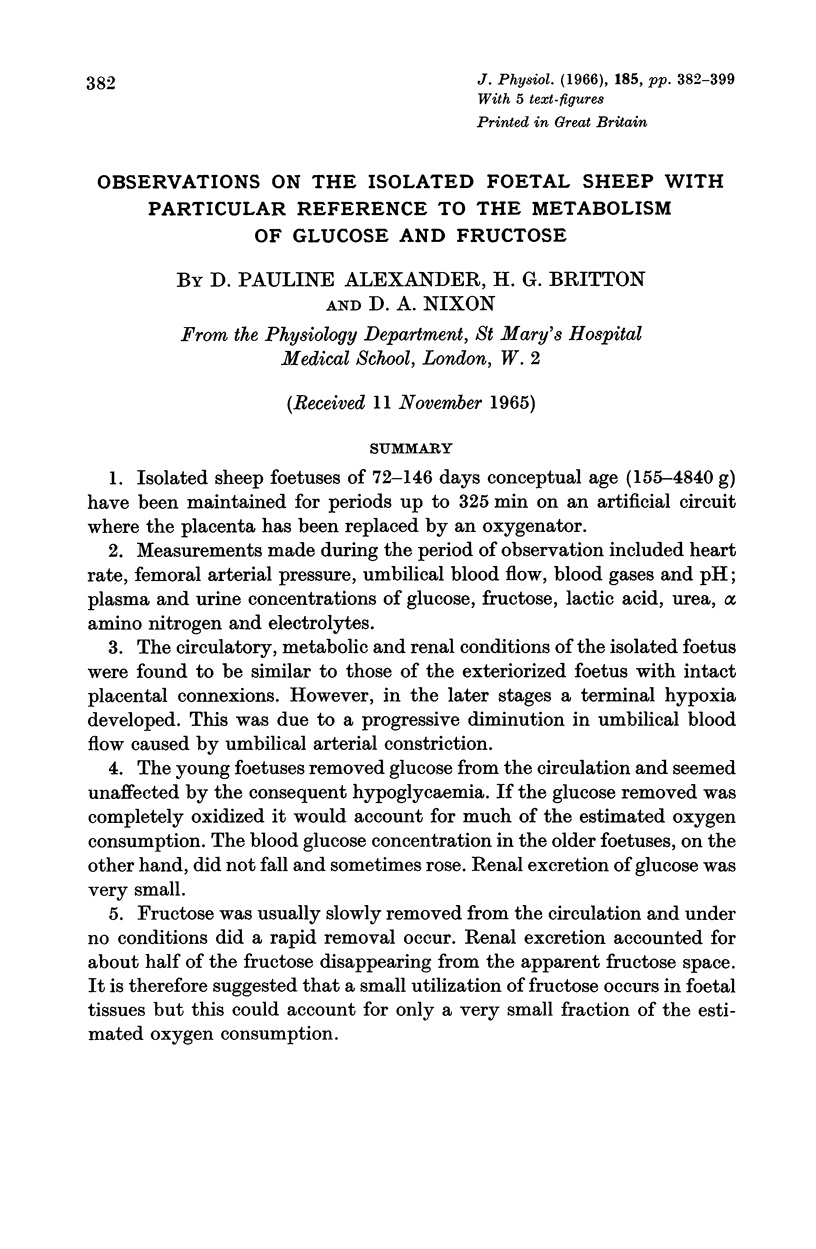
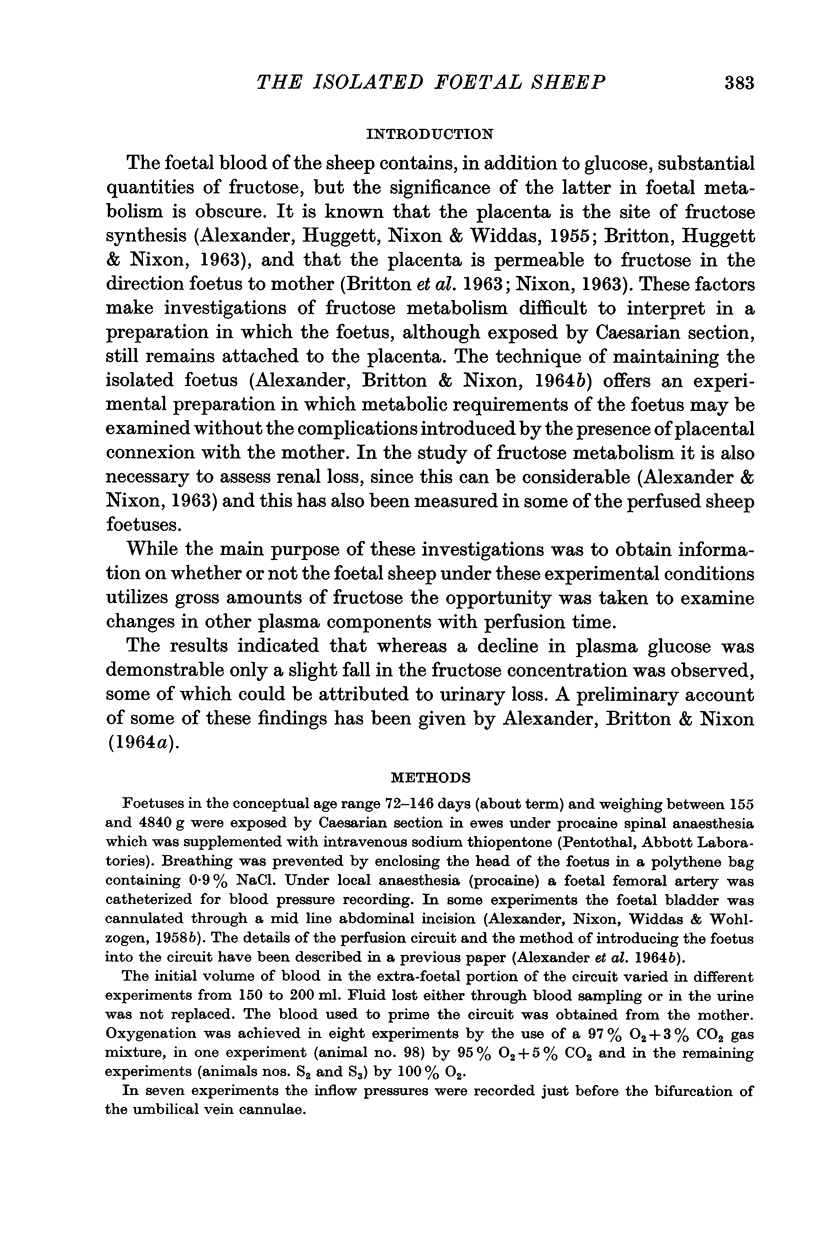
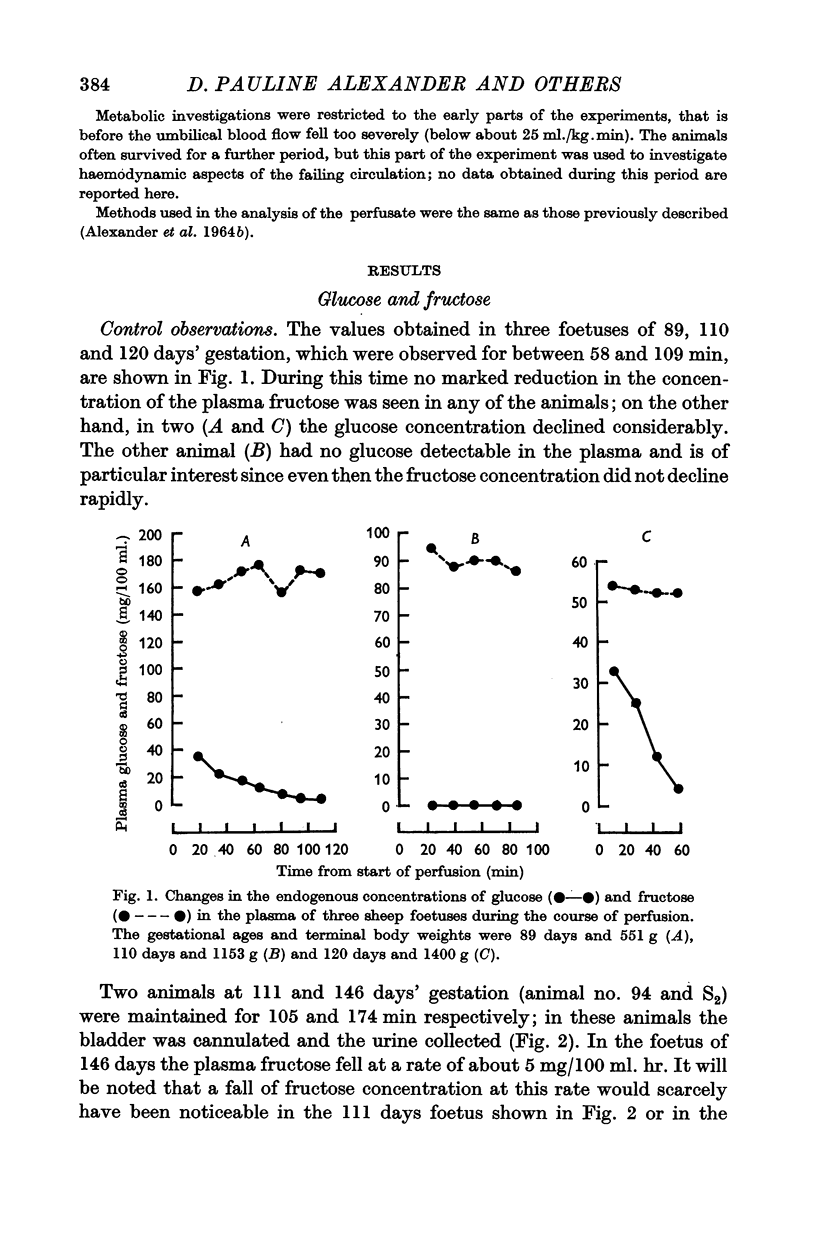
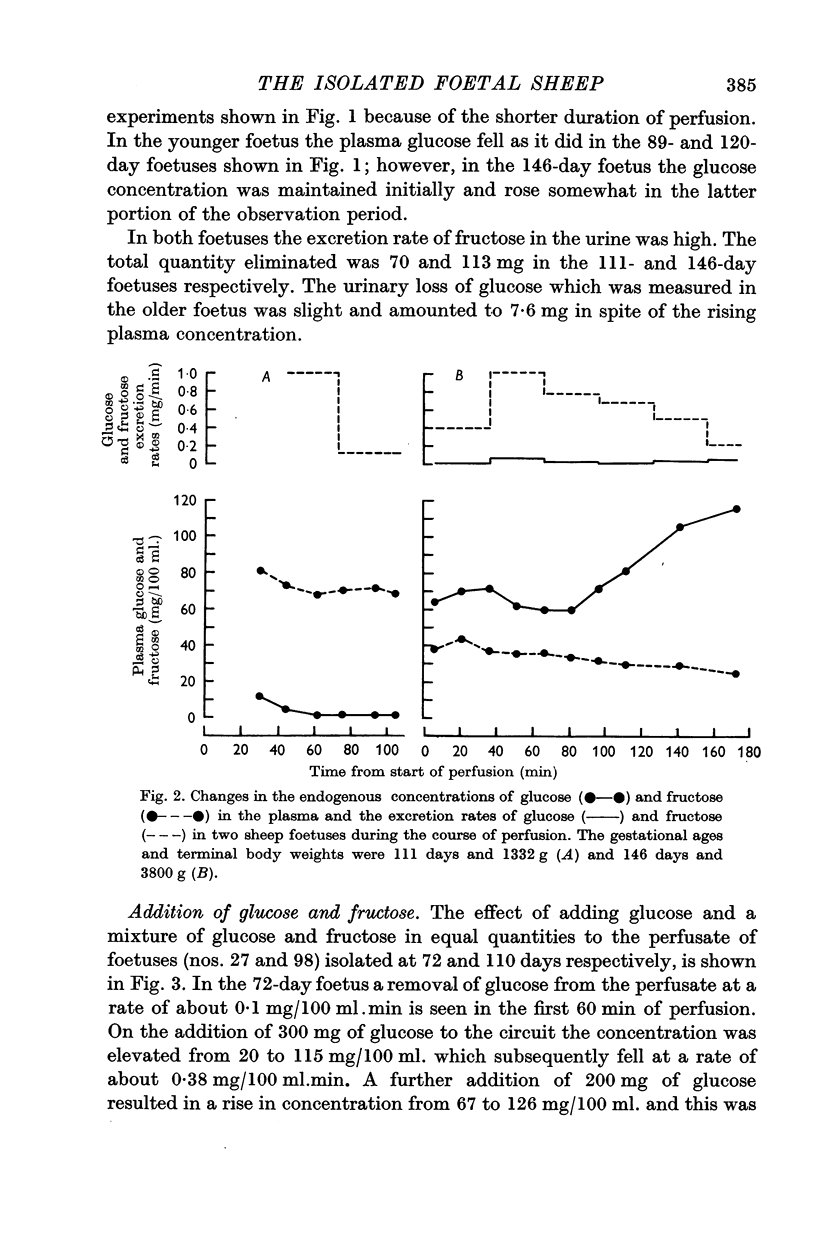
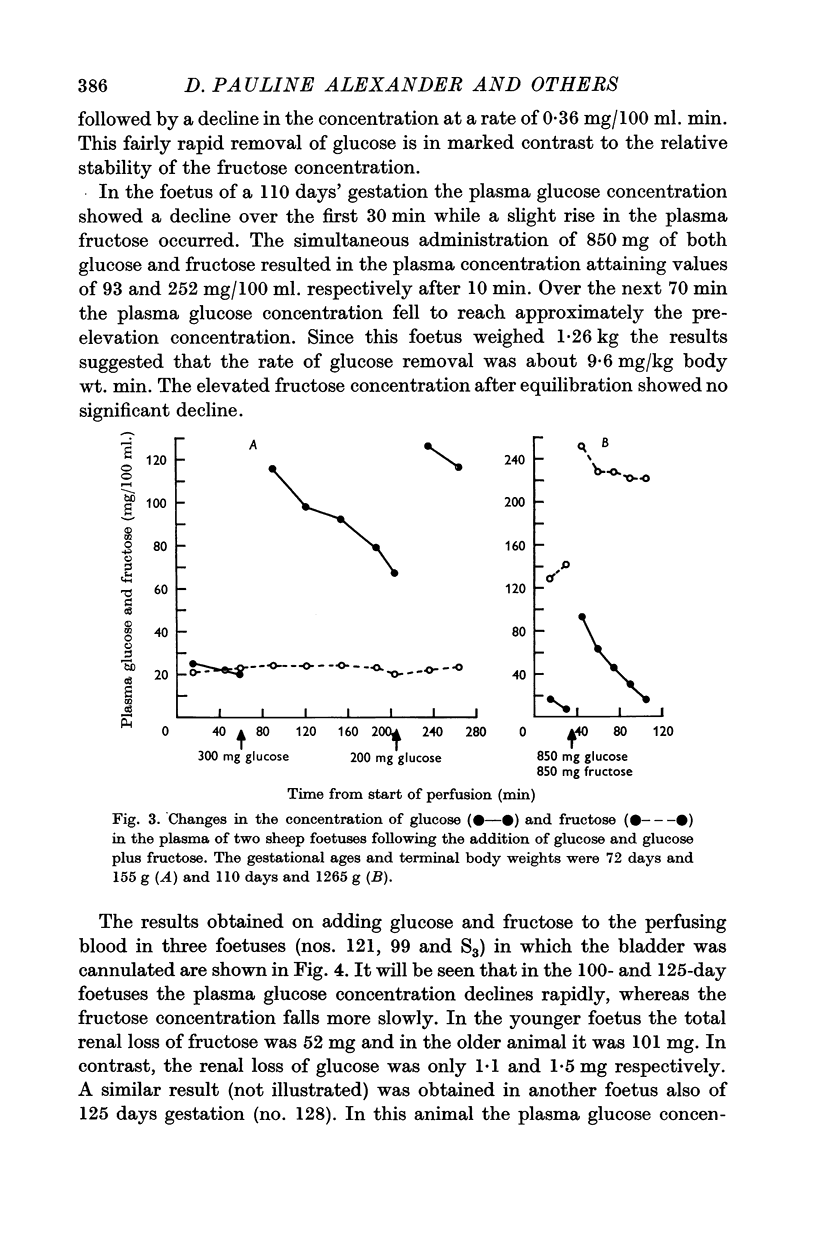
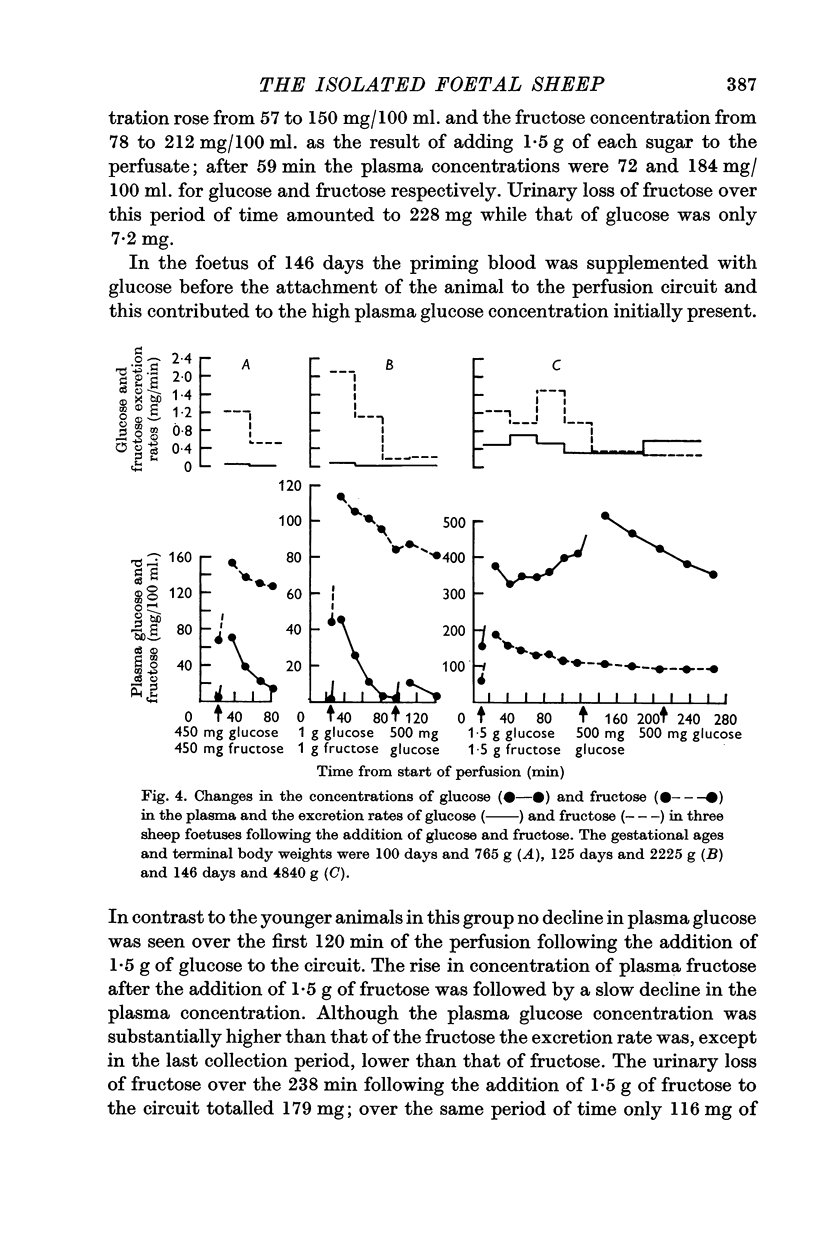
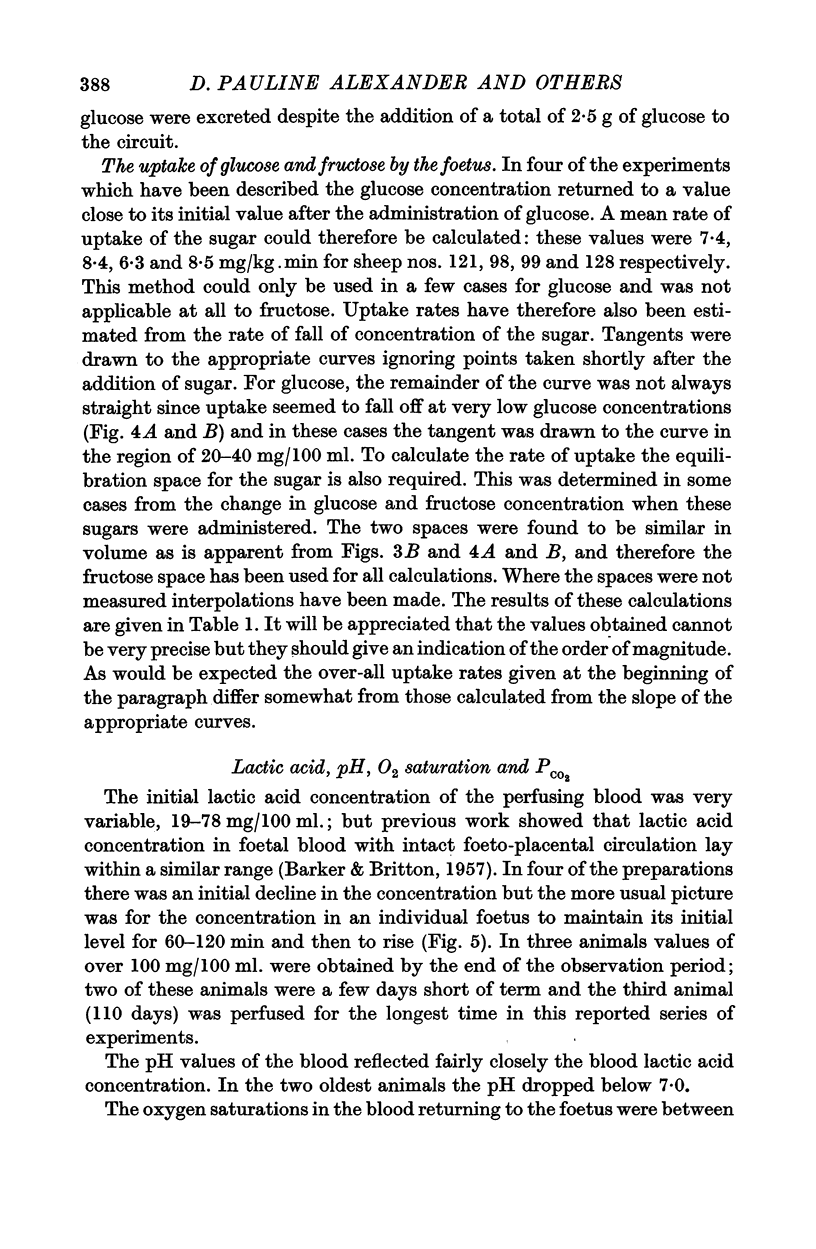
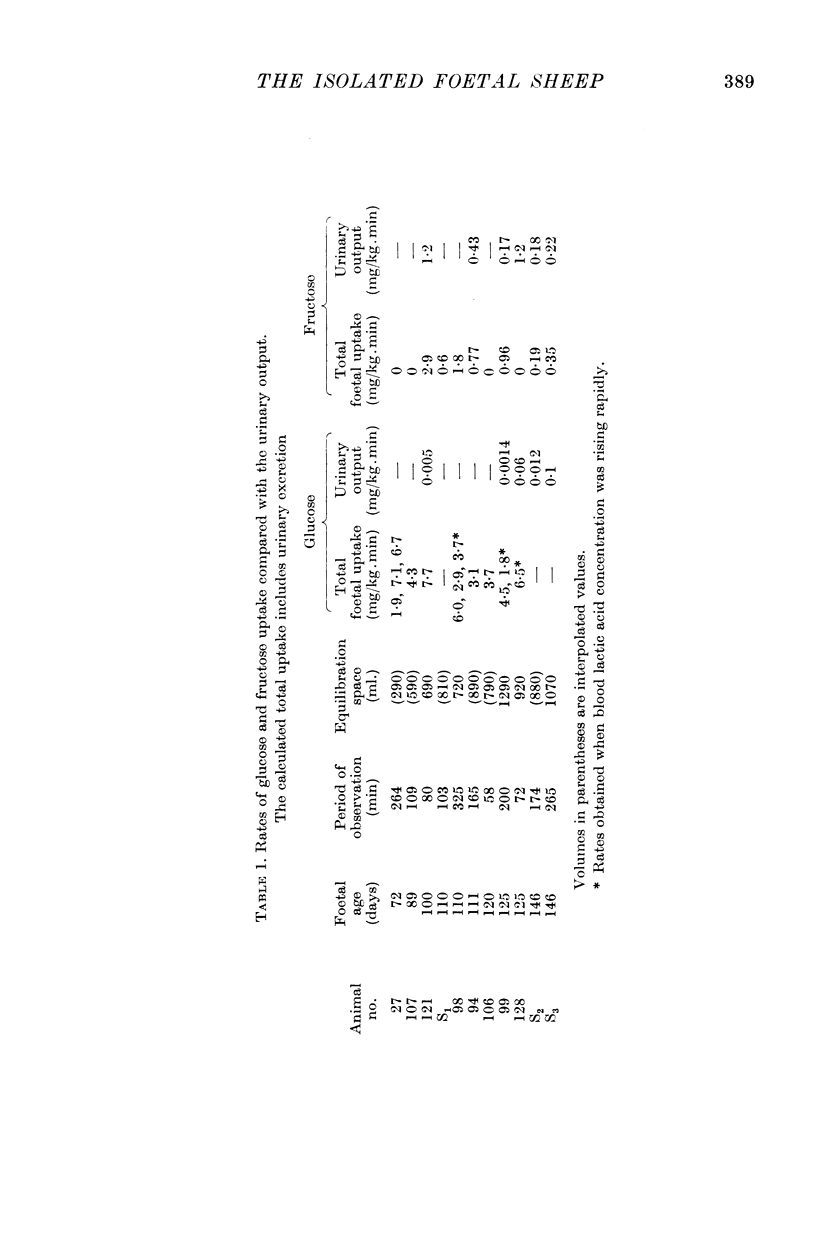
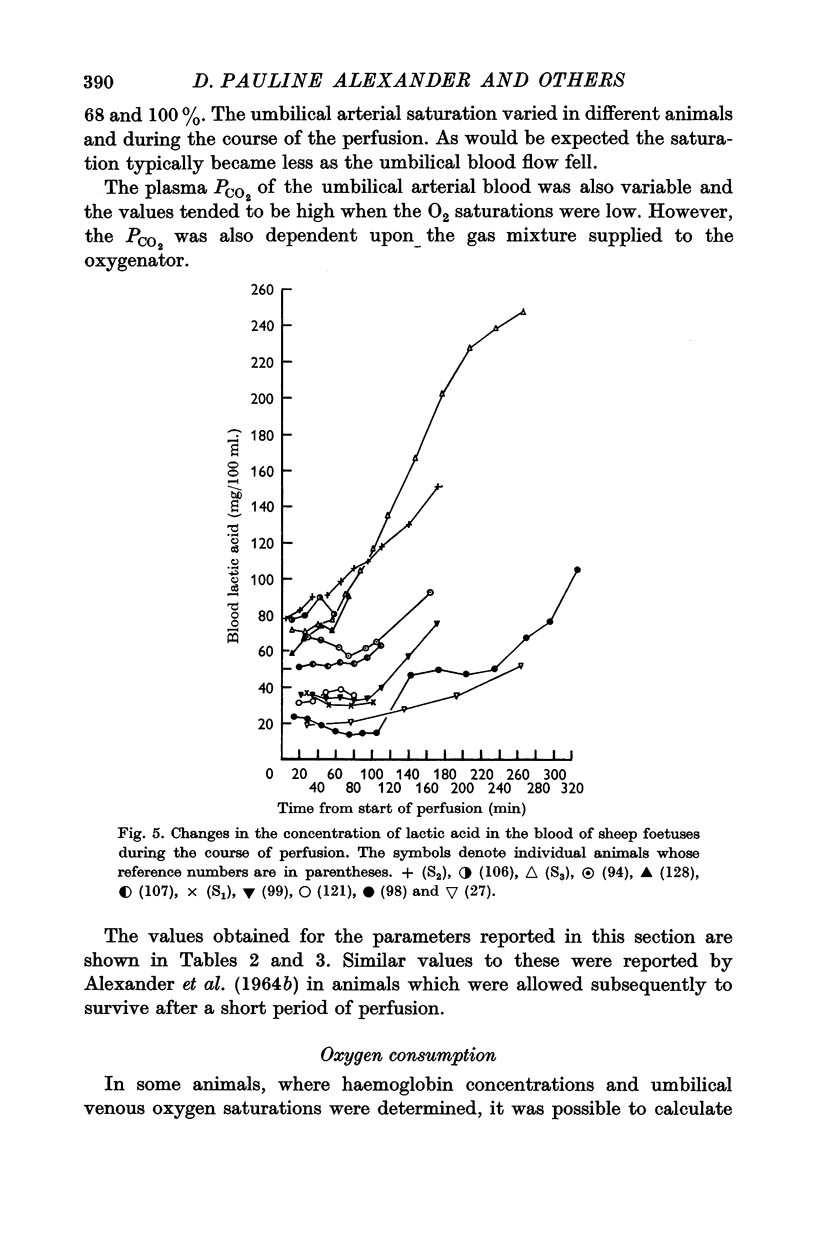
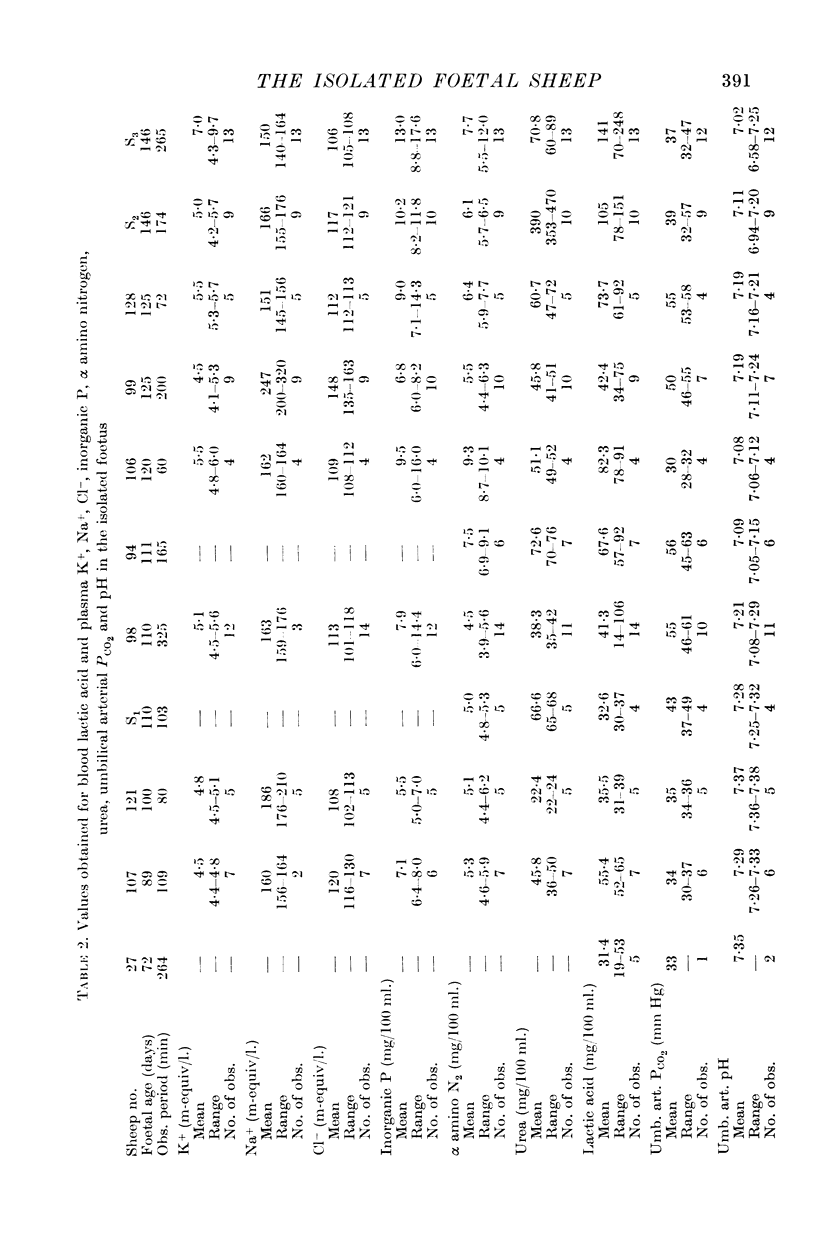
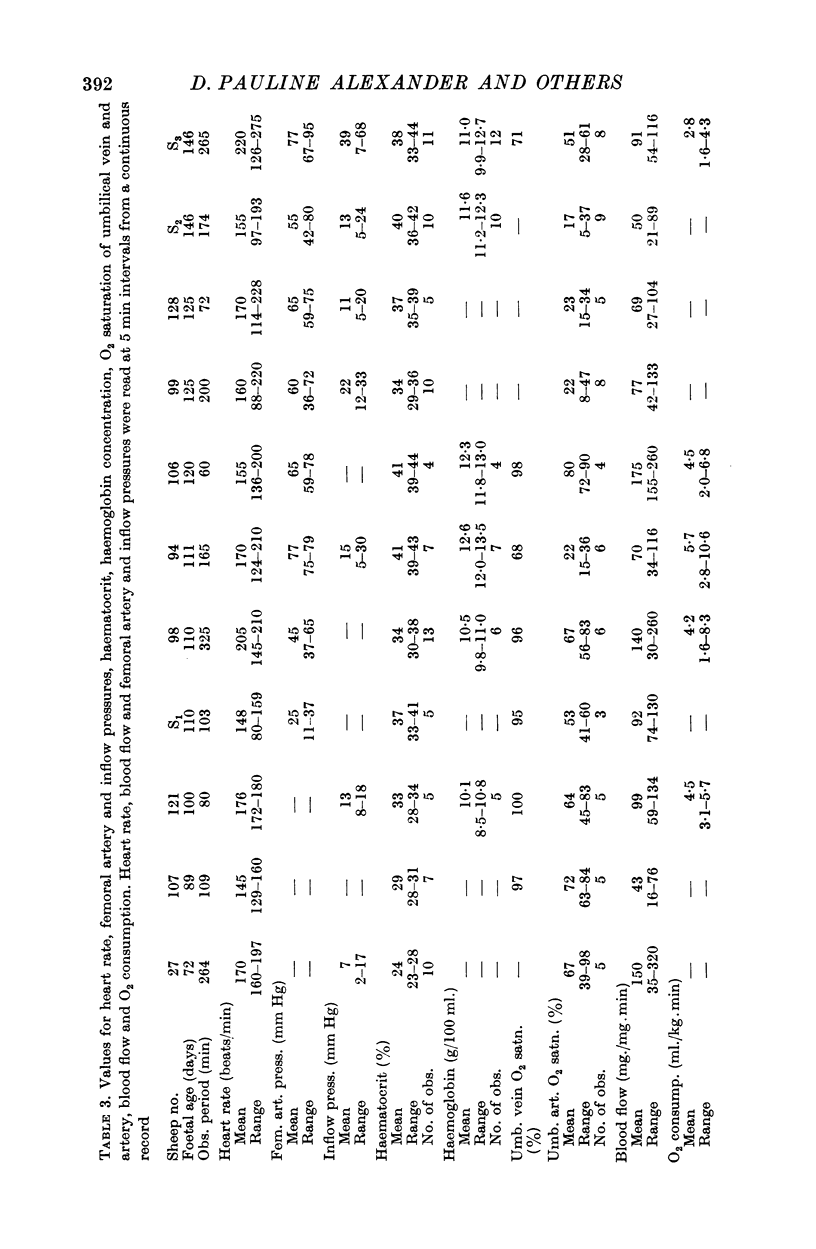
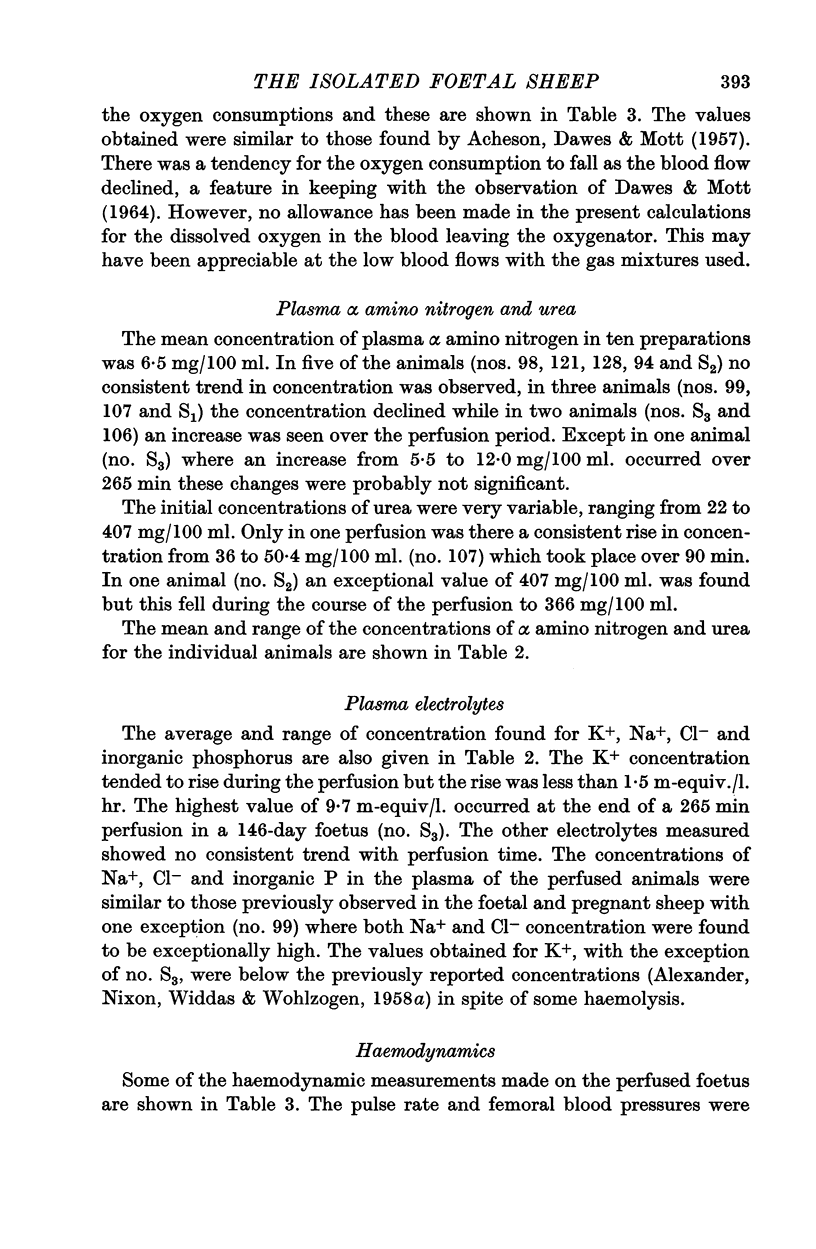
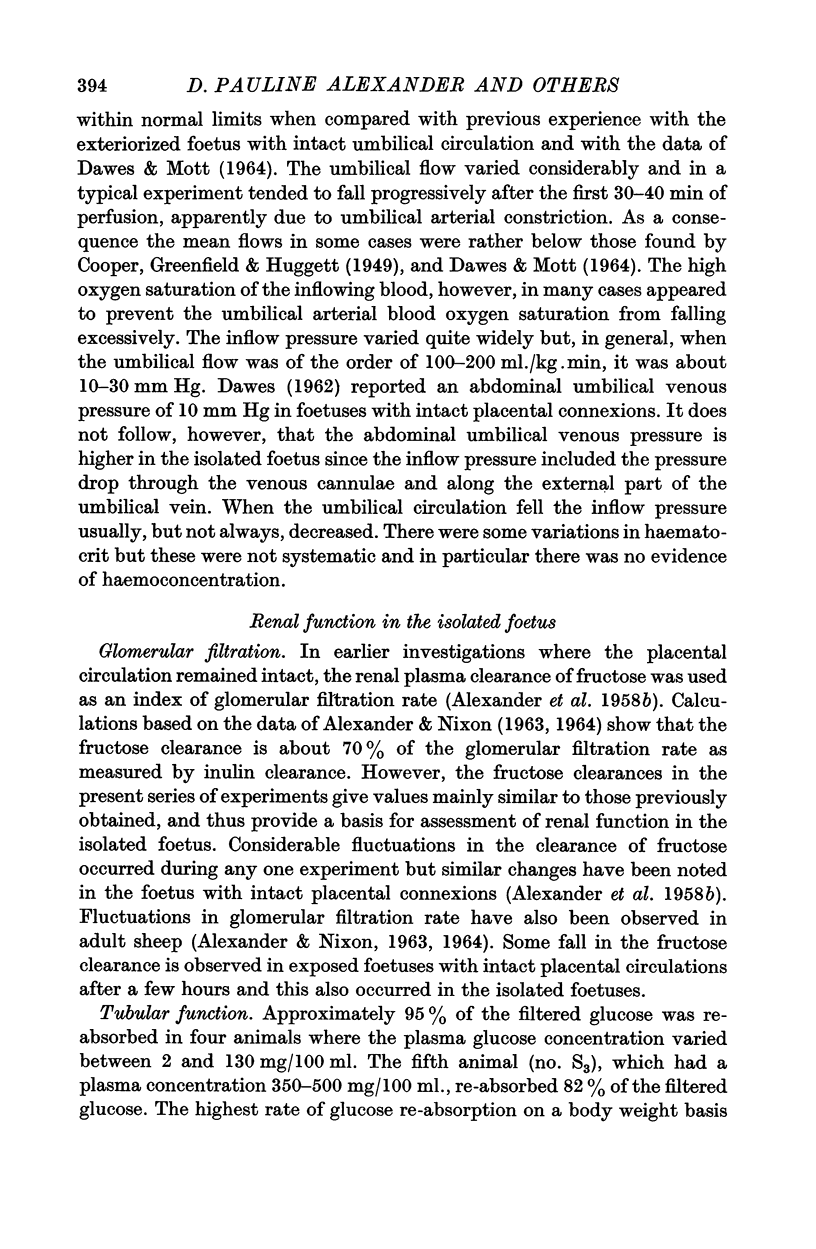
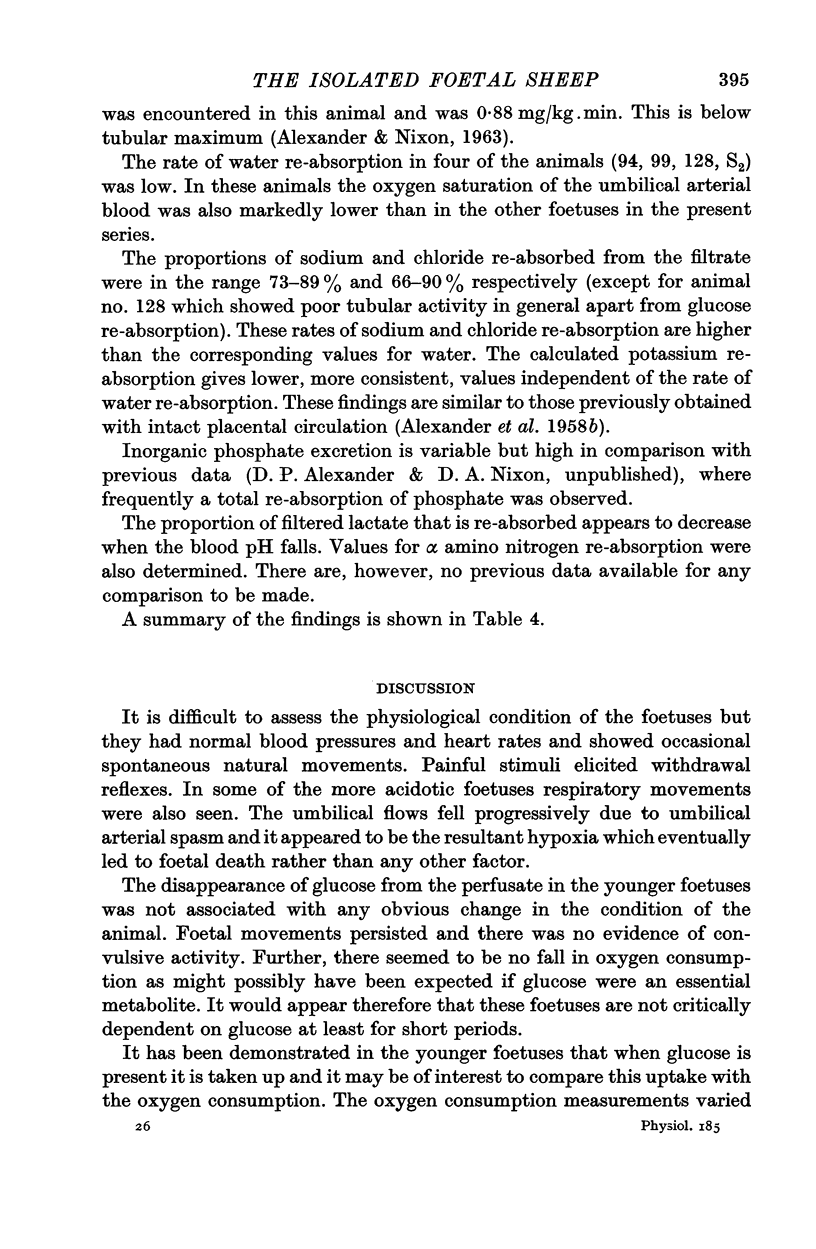
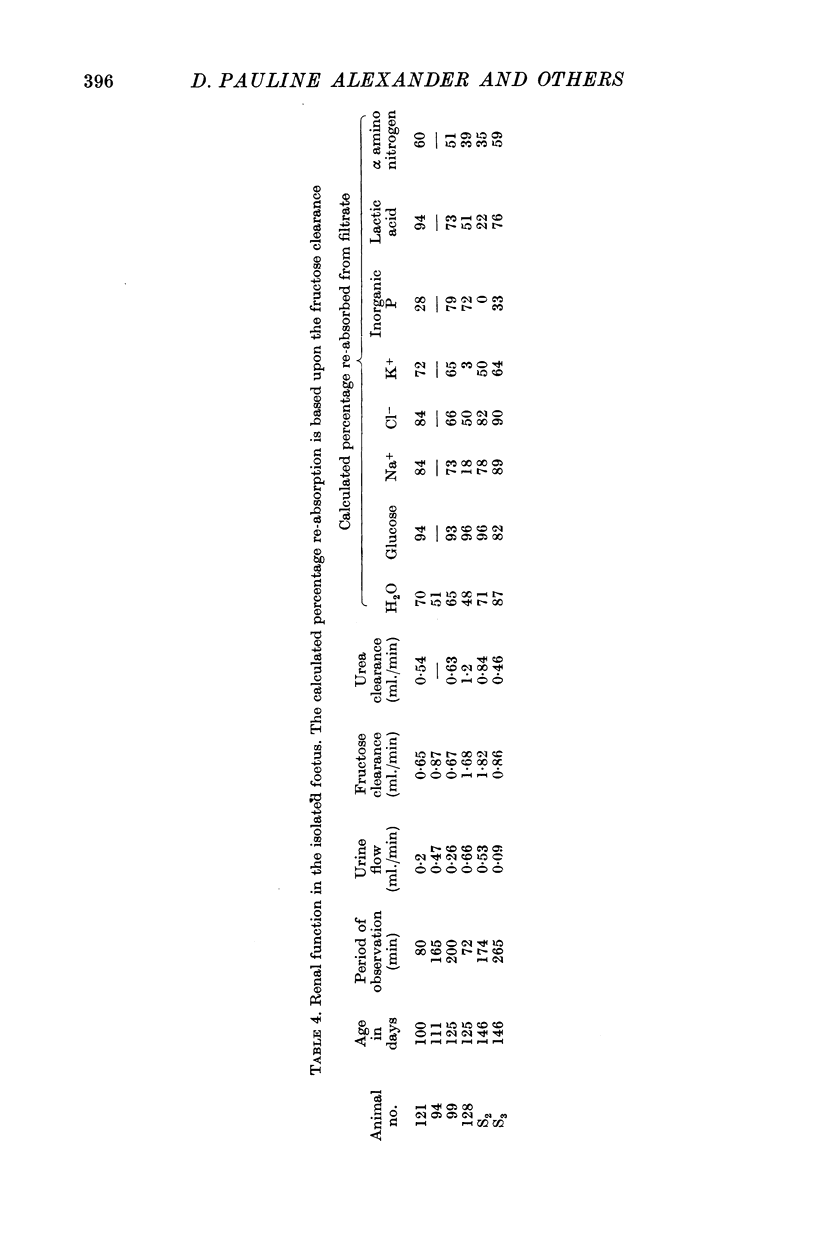
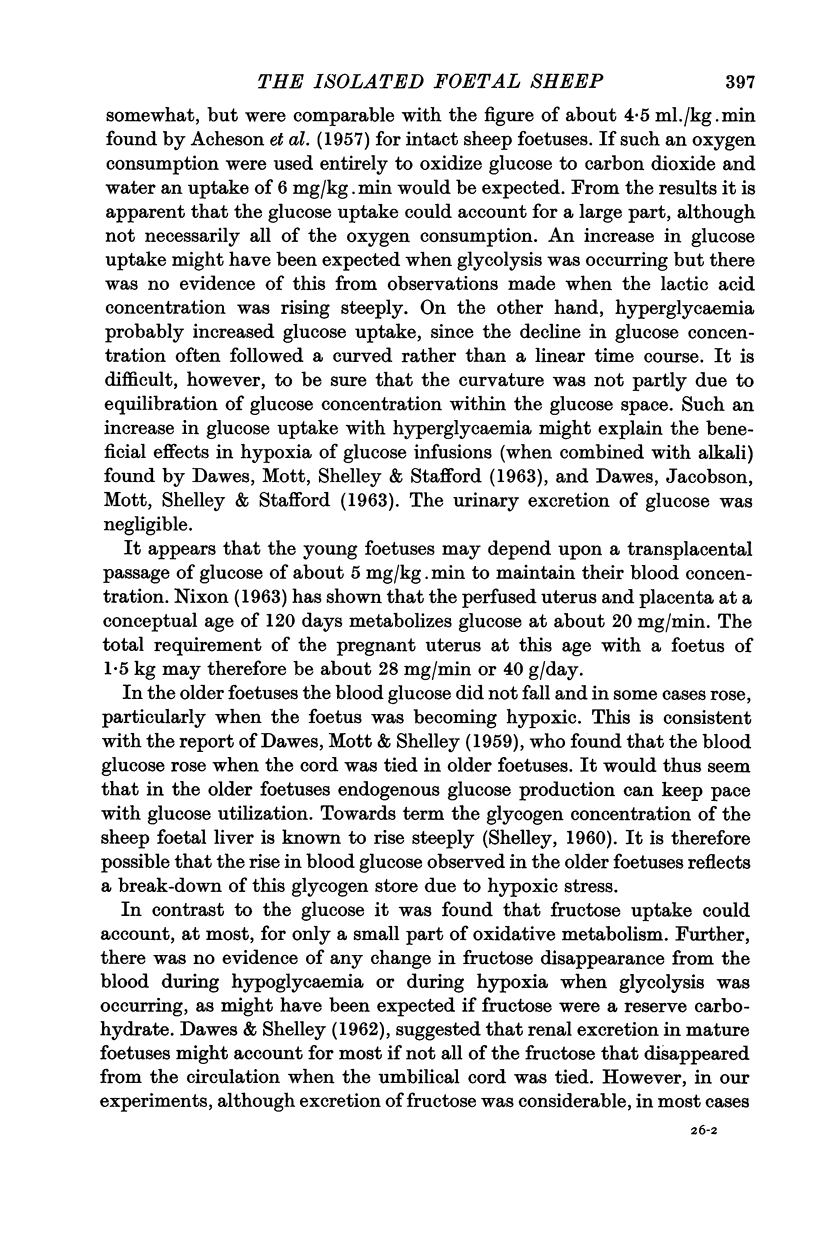
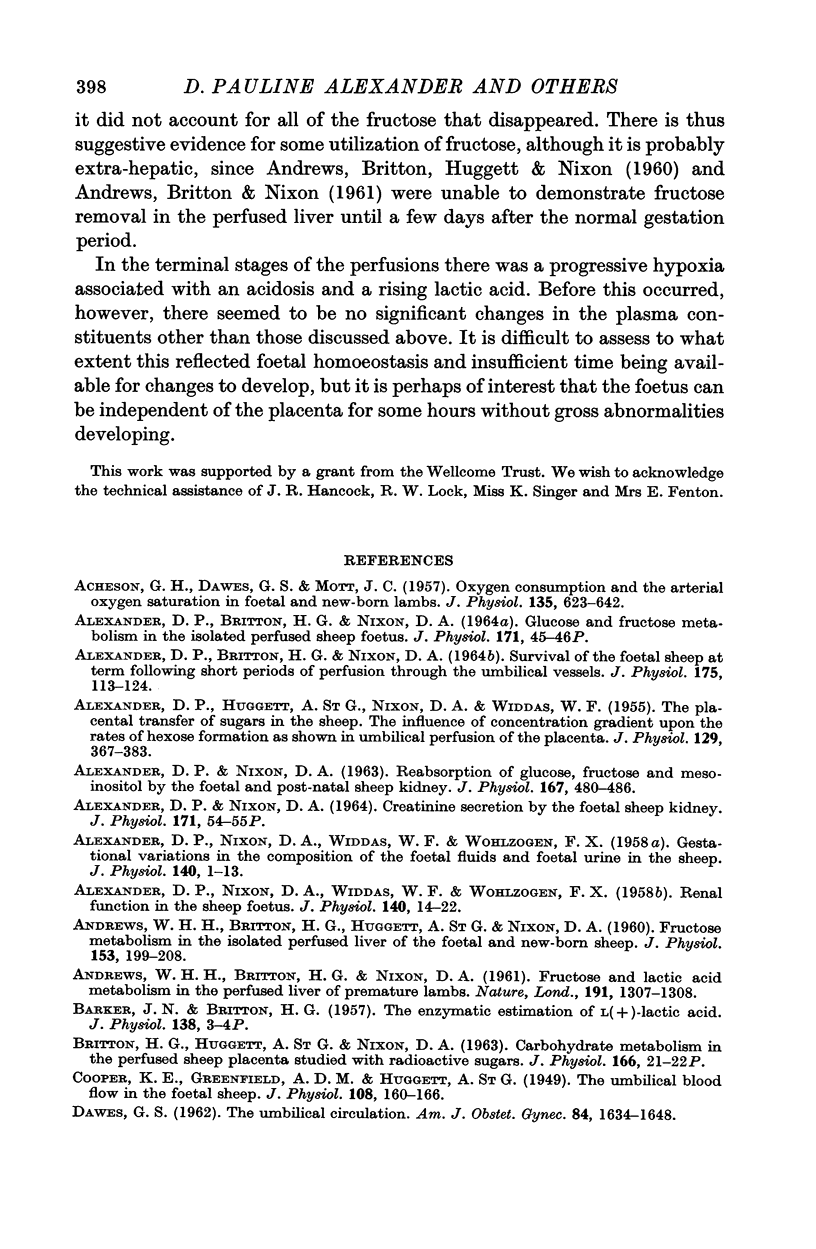
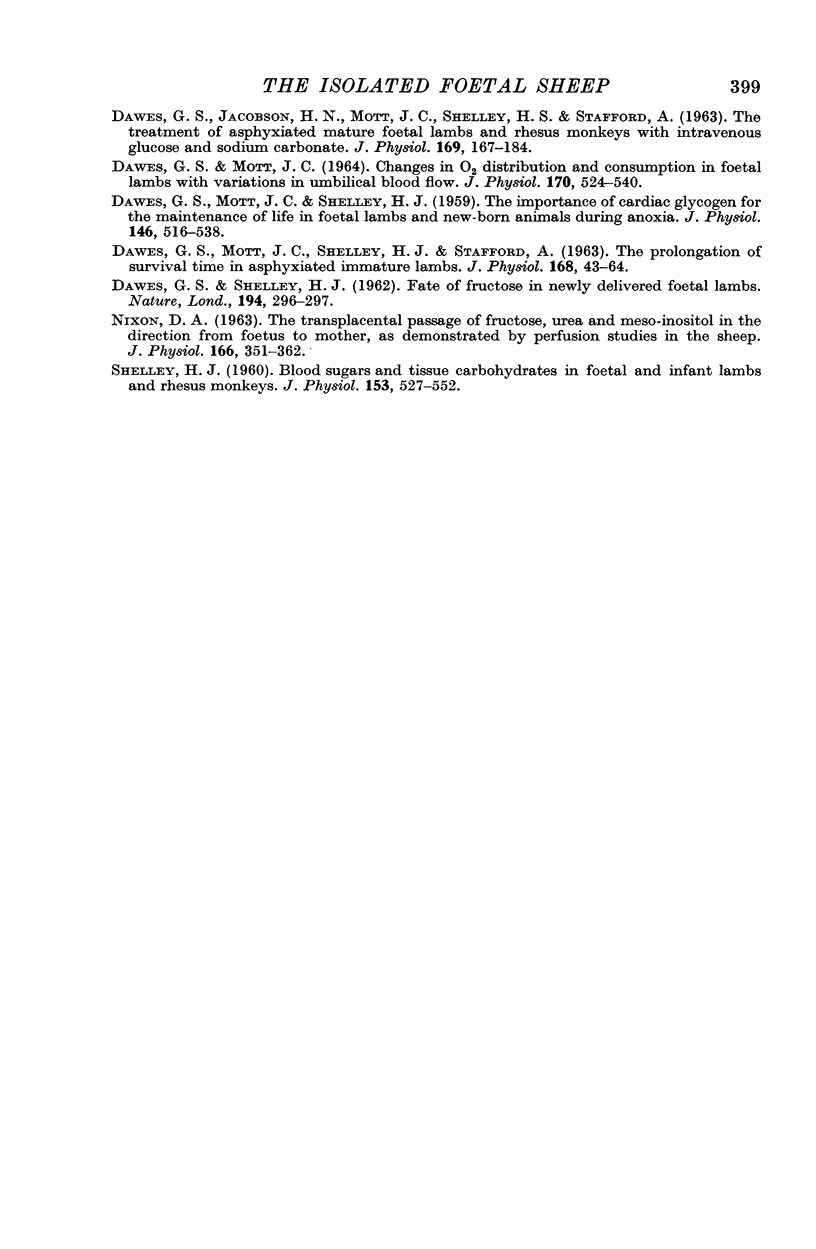
Selected References
These references are in PubMed. This may not be the complete list of references from this article.
- ACHESON G. H., DAWES G. S., MOTT J. C. Oxygen consumption and the arterial oxygen saturation in foetal and new-born lambs. J Physiol. 1957 Mar 11;135(3):623–643. doi: 10.1113/jphysiol.1957.sp005735. [DOI] [PMC free article] [PubMed] [Google Scholar]
- ALEXANDER D. P., BRITTON H. G., NIXON D. A. SURVIVAL OF THE FOETAL SHEEP AT TERM FOLLOWING SHORT PERIODS OF PERFUSION THROUGH THE UMBILICAL VESSELS. J Physiol. 1964 Dec;175:113–124. doi: 10.1113/jphysiol.1964.sp007506. [DOI] [PMC free article] [PubMed] [Google Scholar]
- ALEXANDER D. P., HUGGETT A. S., NIXON D. A., WIDDAS W. F. The placental transfer of sugars in the sheep: the influence of concentration gradient upon the rates of hexose formation as shown in umbilical perfusion of the placenta. J Physiol. 1955 Aug 29;129(2):367–383. doi: 10.1113/jphysiol.1955.sp005360. [DOI] [PMC free article] [PubMed] [Google Scholar]
- ALEXANDER D. P., NIXON D. A. Reabsorption of glucose, fructose and meso-inositol by the foetal and post-natal sheep kidney. J Physiol. 1963 Jul;167:480–486. doi: 10.1113/jphysiol.1963.sp007163. [DOI] [PMC free article] [PubMed] [Google Scholar]
- ALEXANDER D. P., NIXON D. A., WIDDAS W. F., WOHLZOGEN F. X. Gestational variations in the composition of the foetal fluids and foetal urine in the sheep. J Physiol. 1958 Jan 23;140(1):1–13. doi: 10.1113/jphysiol.1958.sp005911. [DOI] [PMC free article] [PubMed] [Google Scholar]
- ALEXANDER D. P., NIXON D. A., WIDDAS W. F., WOHLZOGEN F. X. Renal function in the sheep foetus. J Physiol. 1958 Jan 23;140(1):14–22. doi: 10.1113/jphysiol.1958.sp005912. [DOI] [PMC free article] [PubMed] [Google Scholar]
- ANDREWS W. H., BRITTON H. G., HUGGETT A. S. Fructose metabolism in the isolated perfused liver of the foetal and new-born sheep. J Physiol. 1960 Aug;153:199–208. doi: 10.1113/jphysiol.1960.sp006528. [DOI] [PMC free article] [PubMed] [Google Scholar]
- ANDREWS W. H., BRITTON H. G., NIXON D. A. Fructose and lactic acid metabolism in the perfused liver of premature lambs. Nature. 1961 Sep 23;191:1307–1308. doi: 10.1038/1911307a0. [DOI] [PubMed] [Google Scholar]
- Cooper K. E., Greenfield A. D., Huggett A. S. The umbilical blood flow in the foetal sheep. J Physiol. 1949 Mar 15;108(2):160–166. doi: 10.1113/jphysiol.1949.sp004319. [DOI] [PMC free article] [PubMed] [Google Scholar]
- DAWES G. S., JACOBSON H. N., MOTT J. C., SHELLEY H. J., STAFFORD A. THE TREATMENT OF ASPHYXIATED, MATURE FOETAL LAMBS AND RHESUS MONKEYS WITH INTRAVENOUS GLUCOSE AND SODIUM CARBONATE. J Physiol. 1963 Nov;169:167–184. doi: 10.1113/jphysiol.1963.sp007248. [DOI] [PMC free article] [PubMed] [Google Scholar]
- DAWES G. S., MOTT J. C. CHANGES IN O2 DISTRIBUTION AND CONSUMPTION IN FOETAL LAMBS WITH VARIATIONS IN UMBILICAL BLOOD FLOW. J Physiol. 1964 Apr;170:524–540. doi: 10.1113/jphysiol.1964.sp007347. [DOI] [PMC free article] [PubMed] [Google Scholar]
- DAWES G. S., MOTT J. C., SHELLEY H. J., STAFFORD A. THE PROLONGATION OF SURVIVAL TIME IN ASPHYXIATED IMMATURE FOETAL LAMBS. J Physiol. 1963 Aug;168:43–64. doi: 10.1113/jphysiol.1963.sp007177. [DOI] [PMC free article] [PubMed] [Google Scholar]
- DAWES G. S., MOTT J. C., SHELLEY H. J. The importance of cardiac glycogen for the maintenance of life in foetal lambs and newborn animals during anoxia. J Physiol. 1959 Jun 11;146(3):516–538. doi: 10.1113/jphysiol.1959.sp006208. [DOI] [PMC free article] [PubMed] [Google Scholar]
- DAWES G. S. The umbilical circulation. Am J Obstet Gynecol. 1962 Dec 1;84:1634–1648. doi: 10.1016/0002-9378(62)90007-8. [DOI] [PubMed] [Google Scholar]
- Nixon D. A. The transplacental passage of fructose, urea and mesoinositol in the direction from foetus to mother, as demonstrated by perfusion studies in the sheep. J Physiol. 1963 May;166(2):351–362.2. doi: 10.1113/jphysiol.1963.sp007108. [DOI] [PMC free article] [PubMed] [Google Scholar]
- SHELLEY H. J., DAWES G. S. Fate of fructose in the newly delivered foetal lamb. Nature. 1962 Apr 21;194:296–297. doi: 10.1038/194296a0. [DOI] [PubMed] [Google Scholar]
- Shelley H. J. Blood sugars and tissue carbohydrate in foetal and infant lambs and rhesus monkeys. J Physiol. 1960 Oct;153(3):527–552. doi: 10.1113/jphysiol.1960.sp006553. [DOI] [PMC free article] [PubMed] [Google Scholar]


